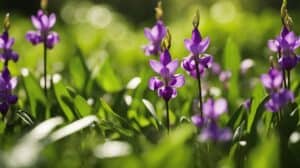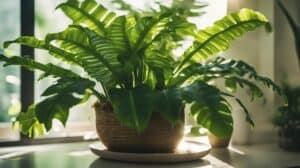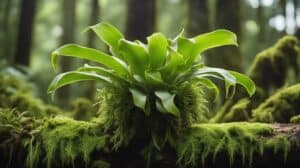Hoya, commonly known as the wax plant, is a tropical plant that has been gaining popularity among houseplant enthusiasts.
With its charming foliage and easy-to-care-for nature, it’s no wonder that more and more people are adding Hoyas to their plant collections.
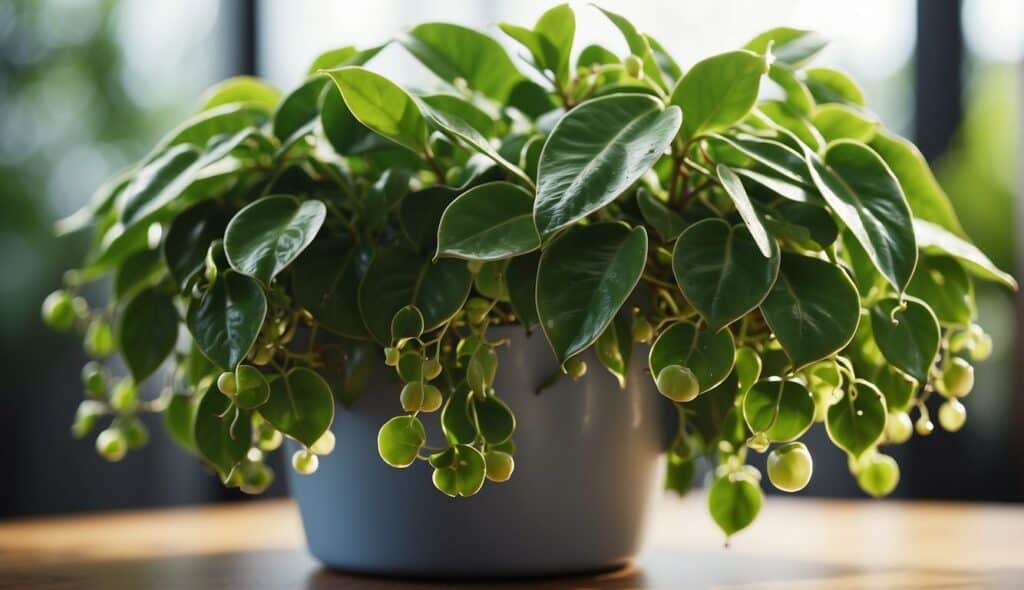
One of the most appealing aspects of Hoyas is their ability to thrive in a variety of conditions.
They can tolerate low light, infrequent watering, and even neglect, making them an ideal plant for beginners.
Additionally, Hoyas are known for their unique foliage, which can range from thick, waxy leaves to delicate, variegated tendrils.
Some varieties even produce fragrant flowers that add an extra layer of interest to the plant.
Whether you’re a seasoned plant parent or just starting out, a Hoya is a great addition to any collection.
In this article, we’ll explore the enduring charm of the wax plant and provide tips for caring for your own Hoya.
From selecting the right variety to ensuring proper lighting and watering, we’ll cover everything you need to know to help your Hoya thrive.
Getting to Know Hoya Harmony

History and Origin
Hoya Harmony, also known as Hoya Carnosa Compacta, is a member of the Hoya family and is native to Southeast Asia, specifically India and China.
The plant was first discovered in the early 1800s by a botanist named Robert Brown, who named it after his friend Thomas Hoy.
The plant has been popular among gardeners for many years due to its unique and attractive appearance.
Its leaves are thick and waxy, which gives it a glossy look, and its flowers are small and star-shaped.
It is commonly referred to as the Wax Plant due to its waxy leaves.
Species Overview
Hoya Harmony is a member of the Hoya family, which includes over 200 species of tropical plants.
It is a slow-growing plant that can reach up to 4 feet in length.
The plant is a popular choice for indoor gardening because it is relatively easy to care for and can thrive in a variety of conditions.
Hoya Harmony is a low-maintenance plant that requires minimal watering and can tolerate low light conditions.
It is also resistant to pests and diseases, making it an ideal choice for beginners.
Overall, Hoya Harmony is a charming and enduring plant that is perfect for beginners who are looking to add some greenery to their home.
With its unique appearance and easy-to-care-for nature, it is sure to bring joy and beauty to any space.
Caring for Your Hoya Harmony
Lighting and Placement
Hoya Harmony plants thrive in bright, indirect light. They can be placed near a window that receives filtered sunlight or under artificial light.
Avoid exposing the plant to direct sunlight as it can cause the leaves to burn. If the plant is not getting enough light, it may not bloom or grow as well.
Watering and Humidity
When it comes to watering, it’s important to strike a balance.
Overwatering can lead to root rot, while underwatering can cause the plant to wilt and die. Water the plant when the top inch of soil feels dry to the touch.
Hoya Harmony plants also appreciate high humidity levels, so misting the leaves or placing a tray of water nearby can help.
Soil and Repotting
Hoya Harmony plants prefer well-draining soil that is rich in organic matter. A mix of peat moss, perlite, and vermiculite is ideal.
Repot the plant every 1-2 years, or when it becomes root-bound.
When repotting, choose a pot that is only slightly larger than the current one to prevent overwatering.
Pruning and Maintenance
Pruning is important to maintain the shape and size of the plant.
Remove any dead or yellowing leaves, as well as any stems that have become too long or leggy.
Hoya Harmony plants also benefit from occasional fertilization during the growing season.
Use a balanced fertilizer and follow the instructions on the label.
By following these simple care tips, anyone can enjoy the enduring charm of the Hoya Harmony plant.
Propagation Techniques
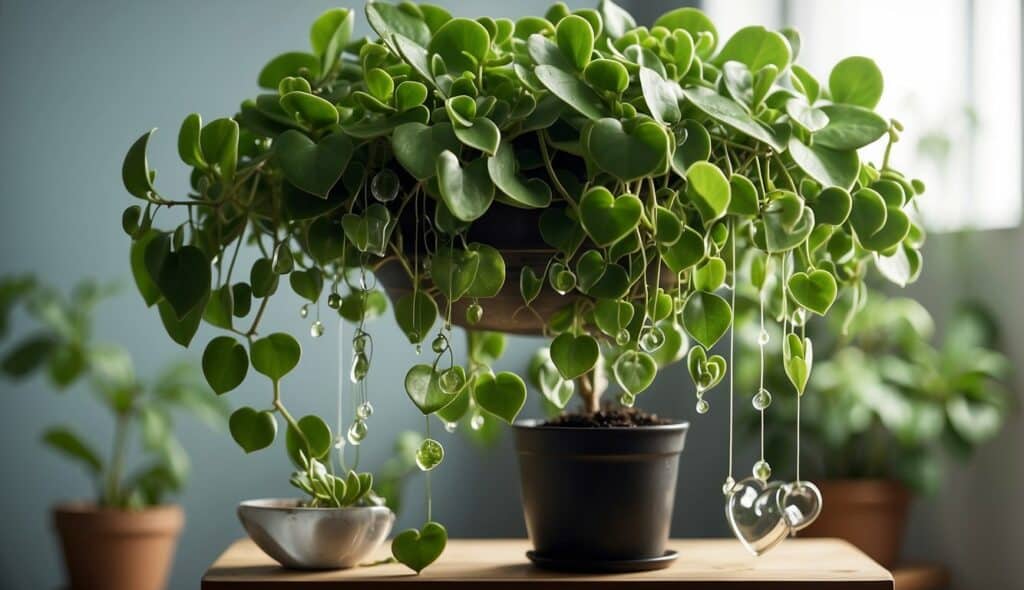
Hoya Harmony is a popular houseplant that can be propagated through various methods.
Here are two simple and effective techniques for propagating Hoya Harmony:
Stem Cuttings
Stem cuttings are the most common way to propagate Hoya Harmony.
To do this, simply cut off a healthy stem that is at least 4 inches long and has a few leaves attached.
Remove any leaves from the bottom 2 inches of the stem, and dip the cut end in rooting hormone.
Then, plant the stem in a well-draining soil mix and keep it moist until roots develop.
It is important to keep the cutting in a warm and humid environment, as this will encourage root growth.
Layering Methods
Layering is another way to propagate Hoya Harmony. This method involves bending a healthy stem down to the soil and pinning it in place with a U-shaped wire.
The stem should be buried in the soil, leaving the top few inches exposed. Over time, roots will grow from the buried stem and a new plant will form.
Once the new plant has established itself, it can be separated from the parent plant and potted on its own.
Both of these propagation methods are easy and effective ways to grow new Hoya Harmony plants.
With a little patience and care, anyone can successfully propagate this charming houseplant.
Troubleshooting Common Issues

Pest Infestations
Hoya Harmony is a relatively pest-resistant plant, but it can still fall prey to common houseplant pests such as spider mites, mealybugs, and scale insects.
These pests can cause damage to the plant’s leaves, stems, and flowers, and can even spread to other plants in the vicinity.
To prevent and control pest infestations, it is important to regularly inspect the plant for signs of pests, such as webbing, sticky residue, or tiny insects.
In case of an infestation, you can use a natural insecticide or a homemade solution of soap and water to treat the plant.
It is also recommended to isolate the plant from other plants until the infestation is under control.
Diseases and Disorders
Hoya Harmony is generally a healthy plant, but it can be affected by certain diseases and disorders, such as root rot, leaf spot, and powdery mildew.
These conditions can be caused by overwatering, poor drainage, or high humidity.
To prevent and treat diseases and disorders, it is important to maintain proper watering and drainage habits, as well as to keep the plant in a well-ventilated area.
If the plant is affected by a disease or disorder, you can use a fungicide or a homemade solution of baking soda and water to treat the plant.
Environmental Stress Factors
Hoya Harmony is a tropical plant that thrives in warm, humid conditions.
However, it can be affected by environmental stress factors such as low light, cold drafts, and dry air.
These factors can cause the plant to drop leaves, wilt, or become stunted.
To prevent and alleviate environmental stress factors, it is important to provide the plant with adequate light, warmth, and humidity.
You can also use a humidifier or a pebble tray to increase the humidity around the plant.
Additionally, you should avoid placing the plant in drafty areas or exposing it to extreme temperatures.
Frequently Asked Questions
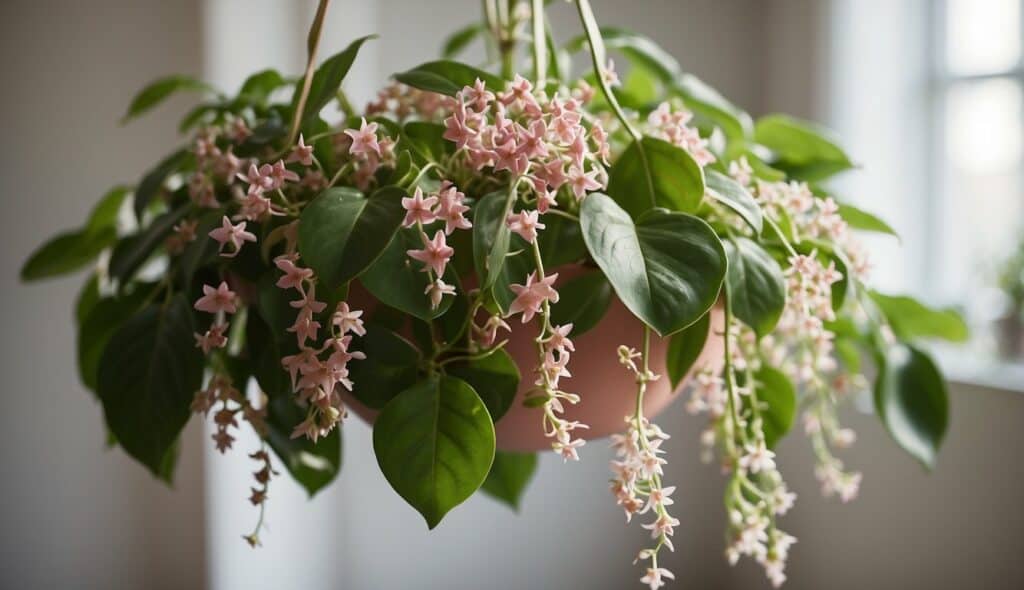
How do I care for a Hoya Harmony plant?
Caring for a Hoya Harmony plant is relatively easy.
They require well-draining soil and should be planted in a pot with drainage holes. Keep the soil evenly moist but not waterlogged.
Hoya Harmony plants prefer temperatures between 60-85°F and humidity levels between 40-60%.
They can tolerate low light conditions but prefer bright, indirect sunlight.
What are the ideal lighting conditions for a Hoya Harmony?
Hoya Harmony plants prefer bright, indirect sunlight.
Direct sunlight can cause the leaves to burn, while too little light can result in stunted growth and fewer flowers.
If you notice your plant is not getting enough light, consider moving it closer to a window or investing in a grow light.
How often should I water my Hoya Harmony?
Hoya Harmony plants prefer to be kept evenly moist but not waterlogged. Water your plant when the top inch of soil feels dry to the touch.
Be sure to water thoroughly, allowing excess water to drain out of the pot’s drainage holes.
Can Hoya Harmony plants thrive indoors?
Yes, Hoya Harmony plants can thrive indoors as long as they are provided with the proper care.
They prefer bright, indirect sunlight and temperatures between 60-85°F.
Be sure to keep the soil evenly moist but not waterlogged and provide adequate humidity levels.
What are some common problems with Hoya Harmony and how can I solve them?
Common problems with Hoya Harmony plants include root rot, spider mites, and mealybugs.
To prevent root rot, be sure to plant your Hoya Harmony in well-draining soil and avoid overwatering.
Spider mites and mealybugs can be treated with insecticidal soap or neem oil.
How do I propagate a Hoya Harmony plant?
Hoya Harmony plants can be propagated through stem cuttings. Take a cutting that is at least 4 inches long and has several leaves.
Remove the bottom leaves and dip the cut end in rooting hormone. Plant the cutting in well-draining soil and keep it moist.
It should root within a few weeks.











